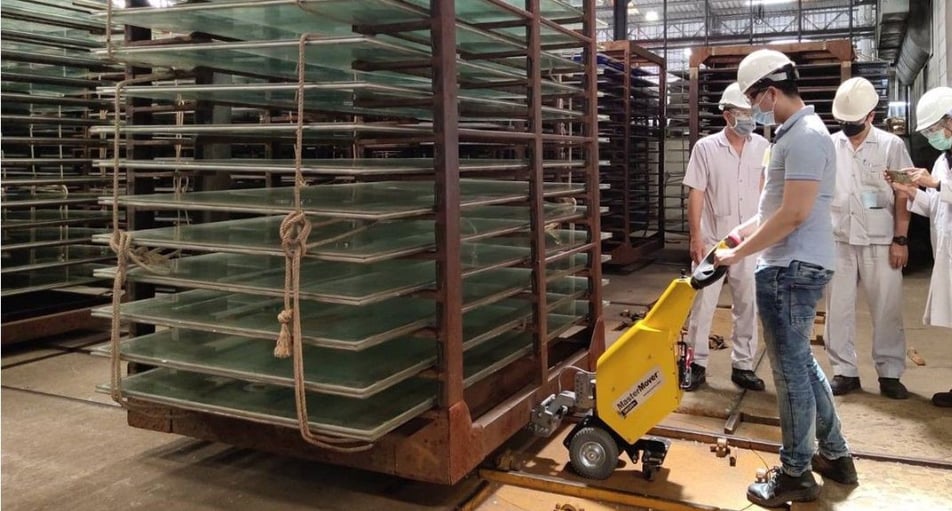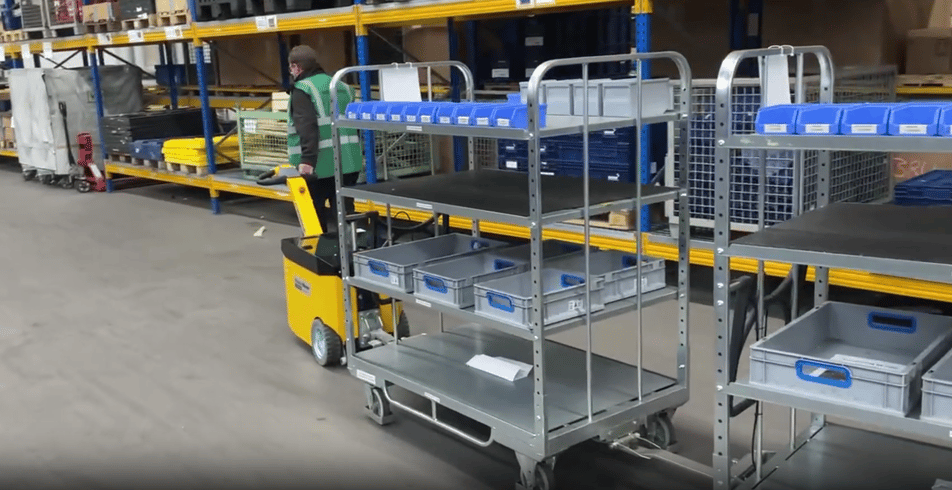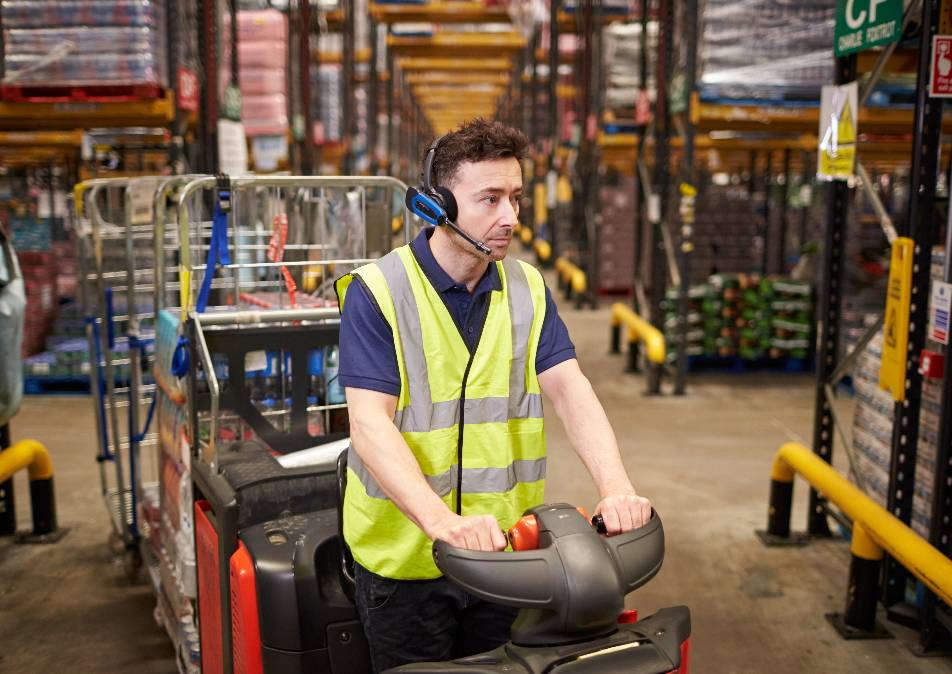Your Guide to Industrial Electric Carts & Powered Carts
Material Handling Equipment
In this blog, we delve into the features of electric carts, their benefits, key considerations, and alternatives like motorized cart tuggers.
Thank you for submitting your consultation request.
A member of the team will be in touch shortly.

The Role of Powered Carts
For manufacturing plants and logistics operations, powered carts are becoming increasingly popular as Safety Managers look to improve ergonomics and workplace safety. Industrial electric carts offer a range of benefits, from enhanced efficiency to ergonomics, transforming the way materials are handled within industrial settings.
What are Industrial Electric Carts and Powered Carts?
Industrial electric carts, also known as powered carts, motorized carts, electric motorized wagons and battery-operated wagons, are specialist vehicles designed to transport materials and goods within industrial facilities.
Using electric motors, these carts enable goods to be moved without manual effort. Typically, operators simply press a button to start and stop movement and steer the motorized carts as required. Electric carts are available with ergonomic designs and customizable configurations, making them ideal for moving light-weight goods throughout facilities.
Key Features of Industrial Electric Carts
Industrial electric carts are equipped with a range of features tailored to meet the demands of industrial environments.
Powered carts can vary in design and often feature shelves or storage racks to maximize storage space. They’re normally fitted with hand controls that enable an operator to engage variable speed controls as well as forward and reverse settings.
-
Electric operation
Eliminates the need for manual effort, improving workplace safety.
-
Ergonomic design
Engineered for user comfort and safety, reducing the risk of workplace injuries.
-
Customizable configurations
Carts can be adapted to suit specific operational requirements, offering versatility and flexibility.
What are the Benefits of Motorized Carts?
Electric carts can be used to deliver benefits across a diverse range of industries and applications, but their core benefits are:
- Increased Productivity: Streamlined material handling processes lead to improved productivity.
- Improved Worker Safety: Ergonomic designs and advanced safety features prioritize worker safety, reducing the risk of accidents and injuries.
Applications and Use Cases of a Powered Cart
Like many other types of material handling equipment, motorized carts are used in a wide range of industries and applications – from industrial manufacturing to warehouses.
Electric industrial carts are often used within warehouses and distribution centers to facilitate material transport and order picking. Enabling goods to be efficiently transported to designated locations, motorized carts can help expedite order fulfilment.
Within industrial operations, powered wagons are often used to assist maintenance personnel in transporting tools and equipment throughout a site, or to help production operatives move light components and parts.
4 Considerations for Choosing Motorized Carts
When selecting a motorized cart or battery-powered wagon, it’s important to consider a range of factors.
- Load Capacity: Assess the weight and dimensions of materials to be transported to determine the appropriate cart capacity. It’s important to consider the payload weight you wish to move, as typically motorized carts are designed to move lighter loads between 500 lbs. and 1,500 lbs. For larger, heavier loads, combining manual carts with a cart tugger or mover is typically a more scalable option.
- Battery Life: With any electric vehicle, it’s important to evaluate the battery performance and charging requirements to minimize downtime and ensure the battery powered cart is available when you need it.
- Maneuverability: Consider the layout of your facility to choose carts with optimal maneuverability. This should involve assessing any positioning requirements and turns/corners that the powered cart will need to be able to make.
- Terrain Capabilities: As with any equipment, it’s important to ensure that any industrial powered cart can move over various surfaces, including smooth floors, uneven terrain and inclines.
The ultimate guide to material handling
Material handling equipment
Looking to understand material handling in a little more detail?
We’ve compiled some helpful resources to get you started.
-
10 Principles of Material Handling Equipment
-
Advanced Material Handling Solutions
-
Material handling in manufacturing
-
Forklift Trucks vs. Electric Tuggers
-
Shunters vs. Electric Tuggers
-
Tow Tractors vs. Electric Tuggers
-
Overhead Cranes vs. Electric Tuggers
-
AGVs vs traditional MHE
-
A Forklift-free Future
-
What is Intralogistics?
-
Diesel Forklift Alternatives
-
Benefits of cart tuggers
Alternatives to Powered Carts



Electric Cart Tuggers
While industrial electric carts offer compelling benefits for the movement of lighter goods and components, businesses may also explore alternative solutions such as combining manual industrial carts and cart tuggers.
Combining manual carts with electric cart tuggers presents a viable option for enhancing flexibility and efficiency in material handling operations – without compromising on workplace safety and ergonomics.
Motorized cart tuggers can efficiently tow multiple carts, improving efficiency and throughput. This hybrid approach leverages the strengths of both manual industrial carts and electric handling aids, providing a versatile and cost-effective solution for material handling. Cart movers and tuggers are also able to handle heavier payloads and weights, enabling them to be used across multiple applications for greater flexibility.
Depending on the needs of the application, cart movers are available as pedestrian operated, remote control, line follow systems or fully autonomous vehicles.

Towing Tractors & Burden Carrier Vehicles
Tow tractors and burden carriers are another alternative to motorized carts. Towing tractors and burden carriers are often seen in industrial and warehouse environments and used to tow mother-and-daughter cart trains. They're best suited to towing multiple loads at once and because of their size, less suited to busy or highly congested areas.
Automated Guided Vehicle Systems
Another option, or alternative to powered cart systems are AGVs - Automated Guided Vehicles. As the name suggests, these vehicle solutions fully automate the movement of loads - limiting the need for human involvement in the operation. In the context of electric carts, AGVs are best suited to applications where the movement of loads is highly repetitive and frequent.
We're here to help
If you’re looking to improve safety, remove the risk of injury and unlock greater operational efficiency with cart movers, we’re here to help. Speak to our team to discuss your application.